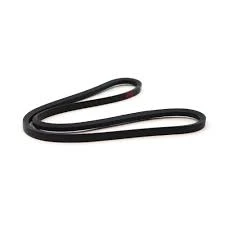- Arabic
- French
- Russian
- Spanish
- Portuguese
- Turkish
- Armenian
- English
- Albanian
- Amharic
- Azerbaijani
- Basque
- Belarusian
- Bengali
- Bosnian
- Bulgarian
- Catalan
- Cebuano
- Corsican
- Croatian
- Czech
- Danish
- Dutch
- Afrikaans
- Esperanto
- Estonian
- Finnish
- Frisian
- Galician
- Georgian
- German
- Greek
- Gujarati
- Haitian Creole
- hausa
- hawaiian
- Hebrew
- Hindi
- Miao
- Hungarian
- Icelandic
- igbo
- Indonesian
- irish
- Italian
- Japanese
- Javanese
- Kannada
- kazakh
- Khmer
- Rwandese
- Korean
- Kurdish
- Kyrgyz
- Lao
- Latin
- Latvian
- Lithuanian
- Luxembourgish
- Macedonian
- Malgashi
- Malay
- Malayalam
- Maltese
- Maori
- Marathi
- Mongolian
- Myanmar
- Nepali
- Norwegian
- Norwegian
- Occitan
- Pashto
- Persian
- Polish
- Punjabi
- Romanian
- Samoan
- Scottish Gaelic
- Serbian
- Sesotho
- Shona
- Sindhi
- Sinhala
- Slovak
- Slovenian
- Somali
- Sundanese
- Swahili
- Swedish
- Tagalog
- Tajik
- Tamil
- Tatar
- Telugu
- Thai
- Turkmen
- Ukrainian
- Urdu
- Uighur
- Uzbek
- Vietnamese
- Welsh
- Bantu
- Yiddish
- Yoruba
- Zulu
දෙසැ. . 26, 2024 09:29 Back to list
Optimizing Variable Speed in Belt Drive Systems for Enhanced Performance and Efficiency
Understanding Variable Speed in Belt Drive Systems
Belt drive systems are essential in various mechanical applications, providing a mechanism to transfer power between rotating shafts. One of the key features that enhances the performance and versatility of belt drives is the ability to control the speed of the driven equipment. Variable speed belt drives are designed to change the speed of the driven pulley, allowing for greater flexibility in powering machines that require different operational speeds. This article will explore the principle behind variable speed belt drives, their applications, advantages, and considerations in their use.
Principles of Variable Speed Belt Drives
At the core of variable speed belt drive systems is the ability to adjust the diameter of the pulleys or change the configuration of the belt. There are several types of variable speed drives, including
1. Variable Diameter Pulleys These pulleys can change their diameter automatically or manually, allowing for a variable speed output based on the configuration. 2. Centrifugal Clutches In this system, the speed adjustment occurs through the use of a centrifugal force, which engages or disengages the belt drive at varying speeds.
3. V-Belt Drives with Slip These systems allow for a certain degree of slippage between the belt and the pulleys, leading to modifications in speed without needing to change the physical setup of the pulleys.
Each of these systems operates on the same fundamental principle by altering the ratio of the driving pulley’s speed to the driven pulley’s speed, one can achieve a variable output, catering to the specific needs of the application.
Applications of Variable Speed Belt Drives
Variable speed belt drives are used extensively in various industries, including
- Manufacturing Many machines require different speeds for tasks such as cutting, milling, or drilling. Variable speed drives enable seamless transitions between these speeds, improving operational efficiency.
- HVAC Systems In heating, ventilation, and air conditioning, variable speed drives help optimize energy consumption by adjusting fan speeds based on real-time needs.
- Automotive Sector Vehicles use variable speed belt drives in their transmissions to improve performance and fuel efficiency.
- Material Handling Conveyor systems often employ variable speed drives to adjust the movement rate of materials based on processing requirements
.variable speed v belt drive

Advantages of Variable Speed Belt Drives
The benefits of implementing variable speed belt drives are substantial
1. Energy Efficiency By matching power consumption with operational demand, these drives can significantly reduce energy wastage, leading to lower operational costs.
2. Improved Performance Variable speed control allows for precise calibration of machinery, enhancing overall performance and product quality.
3. Reduced Mechanical Stress Gradually adjusting speeds reduces the mechanical shock associated with sudden starts or stops, thus prolonging the lifespan of both the drive system and connected equipment.
4. Flexibility The ability to switch speeds allows machines to handle a range of tasks, making variable speed drives invaluable in settings that require versatility.
Considerations in Using Variable Speed Belt Drives
While the advantages are clear, several considerations must be taken into account when implementing variable speed belt drives
- Cost Initial investments can be higher compared to fixed-speed systems, though the long-term savings often justify this expense.
- Complexity More components and technology involved make maintenance a bit more complex.
- Load Characteristics Understanding the load profile is essential to optimize the drive's performance.
In conclusion, variable speed belt drives represent a significant advancement in power transmission technology. By offering flexibility, energy efficiency, and enhanced performance across various applications, they play a crucial role in modern engineering and industrial processes. As technology continues to evolve, the implementations and capabilities of variable speed belt drives are expected to expand further, making them an essential consideration for engineers and manufacturers alike.
-
Korean Auto Parts Timing Belt 24312-37500 For Hyundai/Kia
NewsMar.07,2025
-
7PK2300 90916-T2024 RIBBED BELT POLY V BELT PK BELT
NewsMar.07,2025
-
Chinese Auto Belt Factory 310-2M-22 For BMW/Mercedes-Benz
NewsMar.07,2025
-
Chinese Auto Belt Factory 310-2M-22 For BMW/Mercedes-Benz
NewsMar.07,2025
-
90916-02660 PK Belt 6PK1680 For Toyota
NewsMar.07,2025
-
drive belt serpentine belt
NewsMar.07,2025

